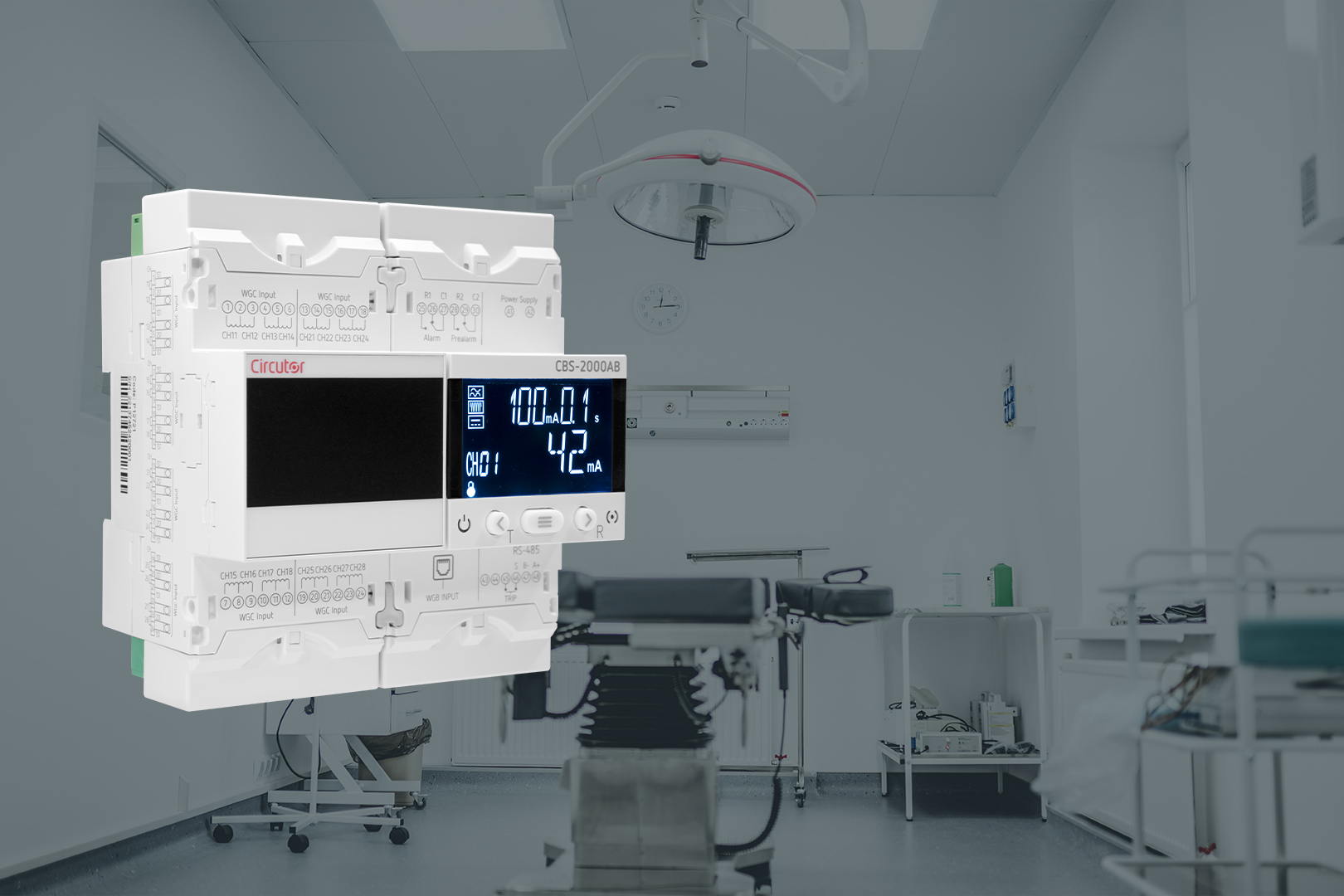
Circutor | 8 de April de 2024
Leakage current monitoring is key to detecting potential insulation problems in loads and installations. An insulation failure in conductors or loads, such as motors or pumping systems, can jeopardize the continuity of supply of our installation, resulting in service outages and considerably increasing operating costs.
Do you have critical loads in your installation whose process you would like to ensure by having a leakage monitoring system to track its progress more closely? Do you have an IT isolated neutral system and need to monitor leakage or insulation faults in multiple circuits?
In the following video, we present our new solutions to ensure continuity of supply in your installation:
By using monitoring units, you can track multiple circuits using a single device, saving both space and cost. This solution is ideal for TT, TN-S and IT systems, where continuity of supply has to be ensured, checking in real time the proper operation of the circuits or loads connected and anticipating any problems that may cause a future service outage, or planning maintenance and repair actions with enough time to avoid unexpected interventions or malfunctions.
Another additional problem to consider when measuring leakage is the presence of loads with AC/DC converters, such as three-phase drives, UPS or charging electric vehicles, since they can cause a DC current leak that is not detectable by type-A protection relays. To obtain precise measurements of this type of leak, type-B protection would ideally be installed. As a result, units that combine type-A + type-B protection in a single device resolve these problems, ensuring continuity of service in any situation.
To ensure continuity of service in this type of application, we have designed the new residual current monitoring units: CBS-1600A and CBS-2000AB.
CBS-1600A

Sinusoidal Alternating Current

Sinusoidal Alternating CurrentPulsating Alternating Current
16 Channels type A (AC)
CBS-2000AB

Sinusoidal Alternating CurrentPulsating Alternating CurrentDirect Current
4 Channels type B (AC+DC)
These protection units are ideal for distribution panels with multiple lines or loads to control, combining in a single device monitoring of leaks and loss of insulation in conductors or loads, while minimizing space usage and reducing the installation cost.
–
CBS-1600AB
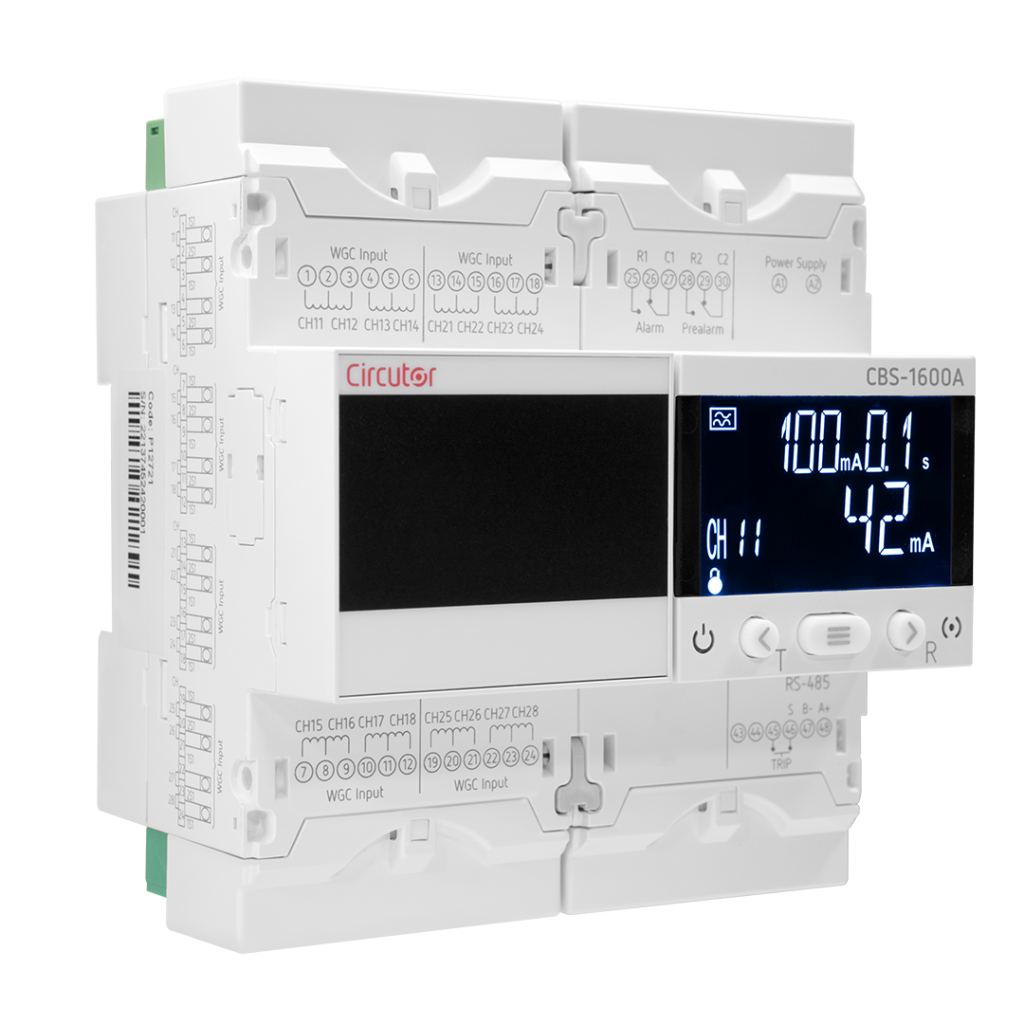
16 type-A channels
–
CBS-2000AB
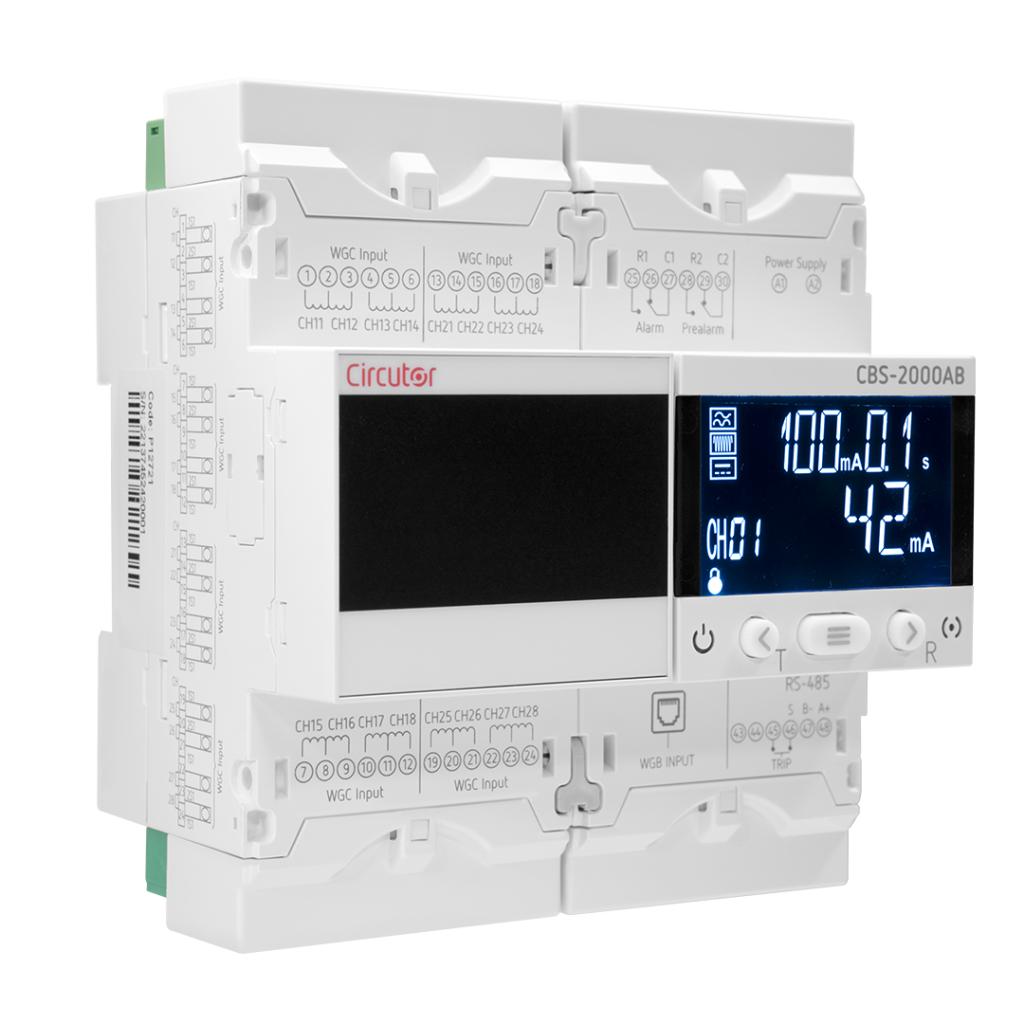
16 type-A channels + 4 type-B channels
Example of CBS-2000AB settings
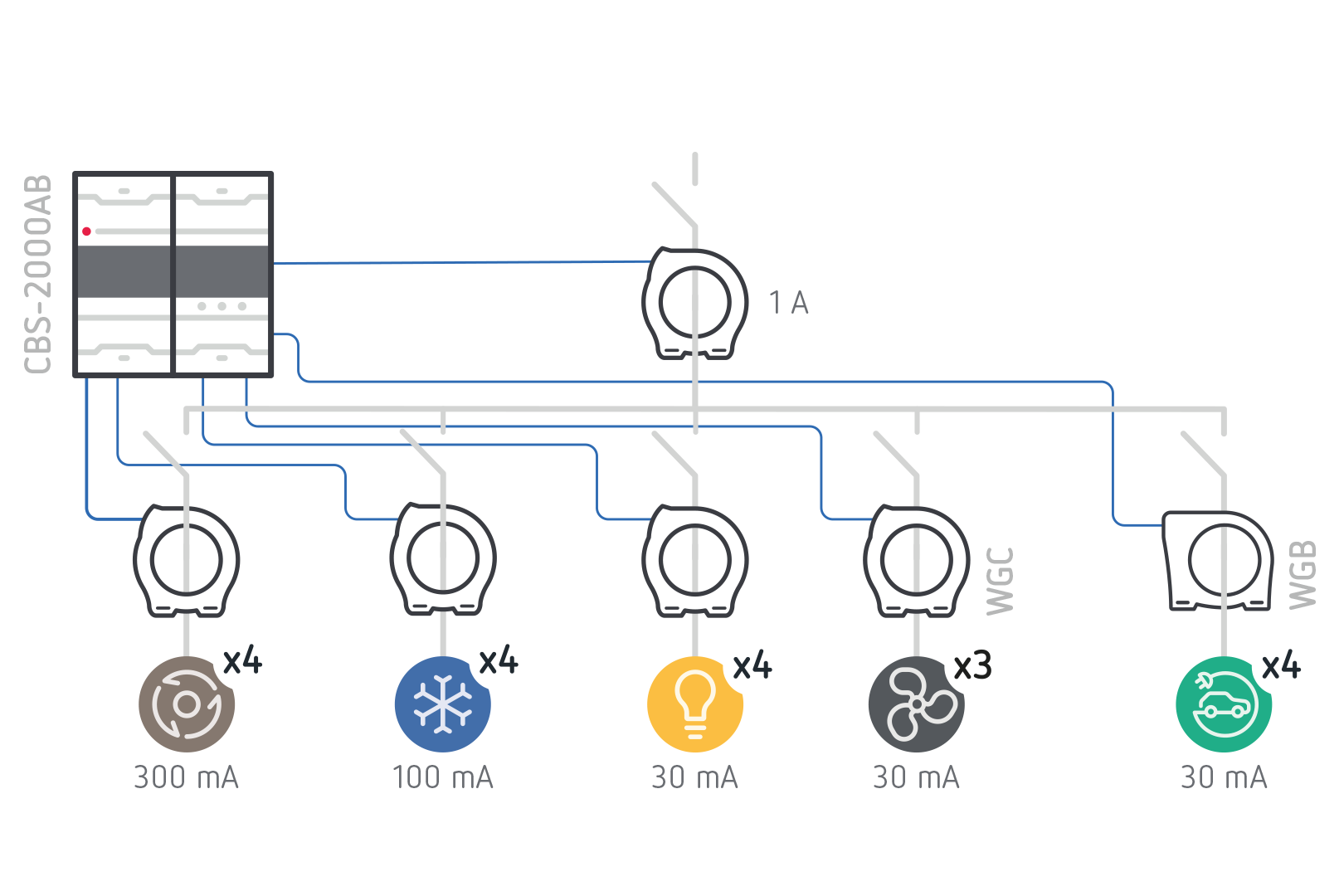
Monitors and tracks leakage currents in real time. Individually view the status of each of the 16 or 20 channels, monitoring the leakage level and visually identifying any alarm level programmed.
The CBS units let you track and monitor leaks in real time, either directly on the display or via RS-485 communications (Modbus RTU).
The display changes to red when the alarm level is exceeded, saving the value of the current and, for a type-B channel (CBS-2000AB only), breaking it down into its AC and DC components, making it easy to detect the problem and the source and helping you identify where the leak is occurring at any given time.
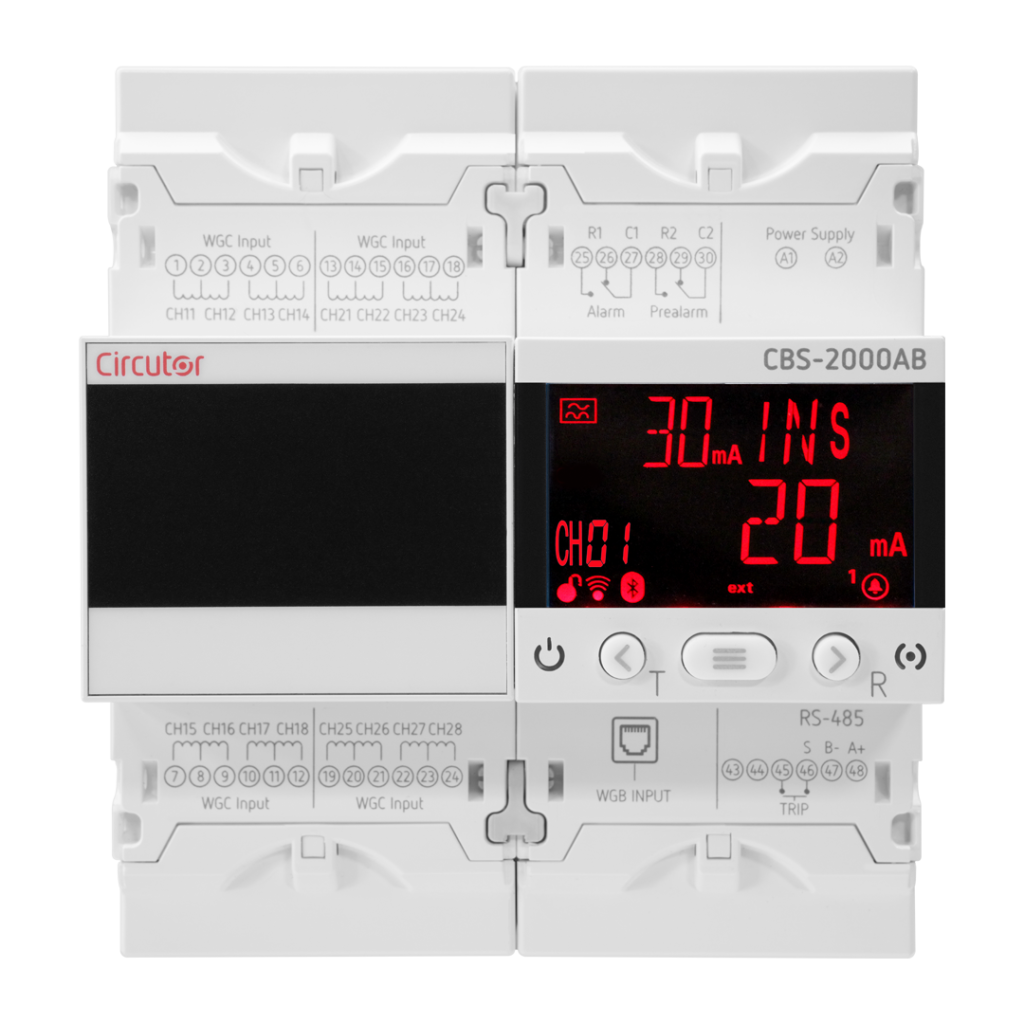
Leakage in AC
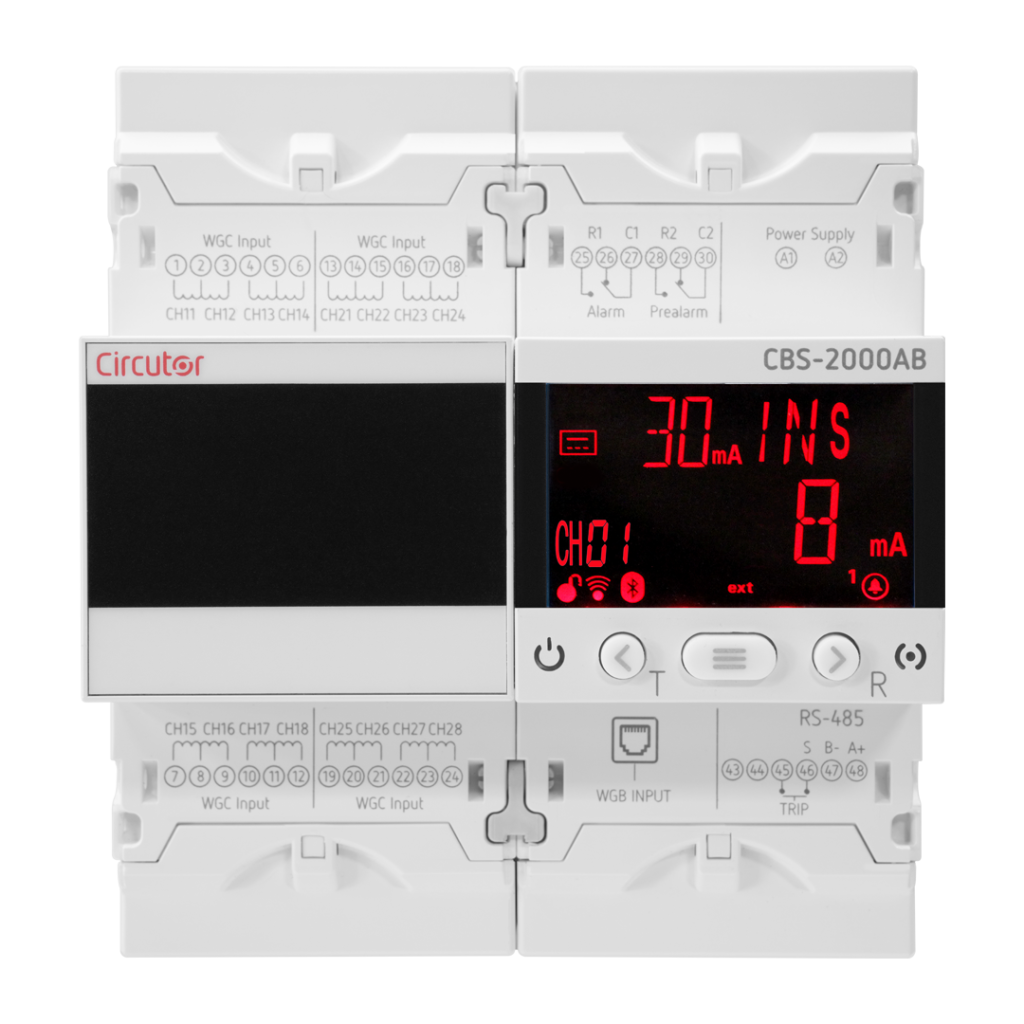
Leakage in DC
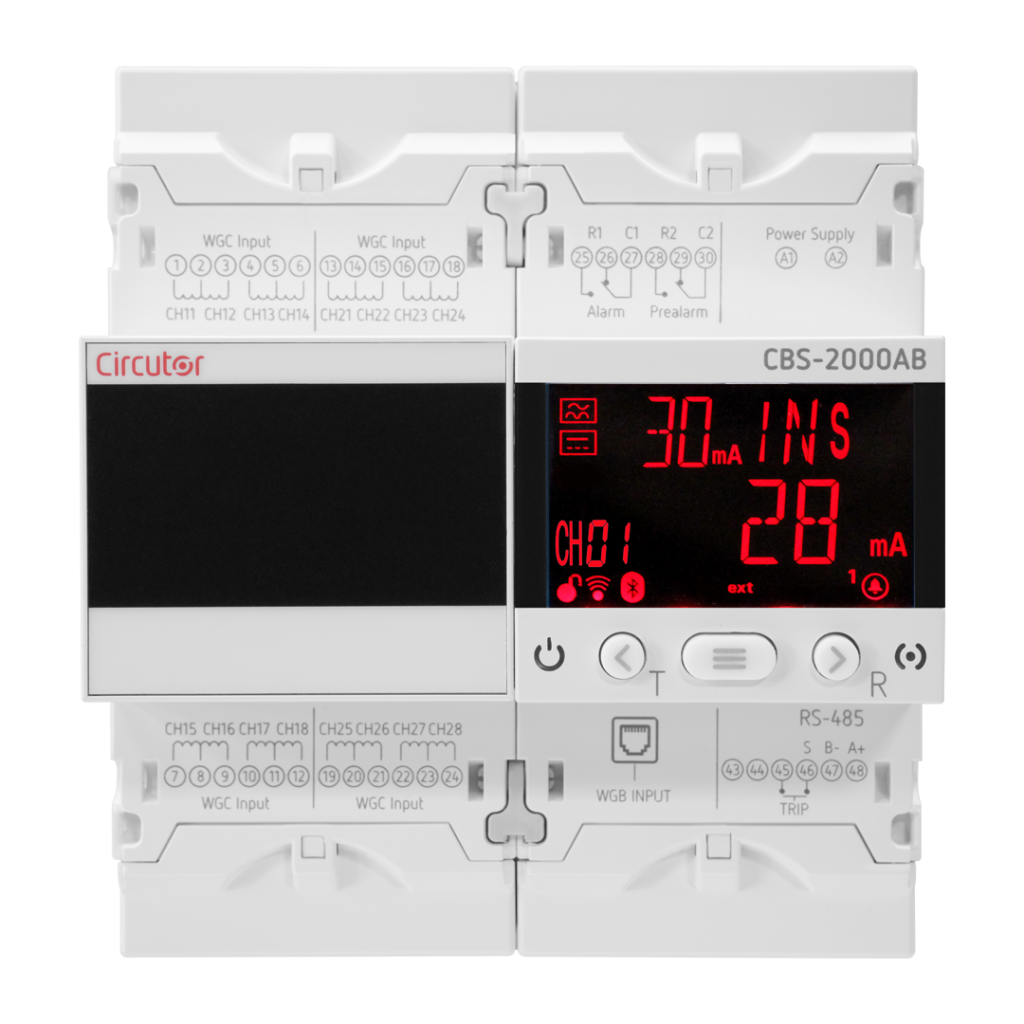
Total leakage
The display is backlit in red when the set alarm level is exceeded, making it easier to identify the line containing the fault. The different multi-coloured backlights will help you identify the status of each channel.
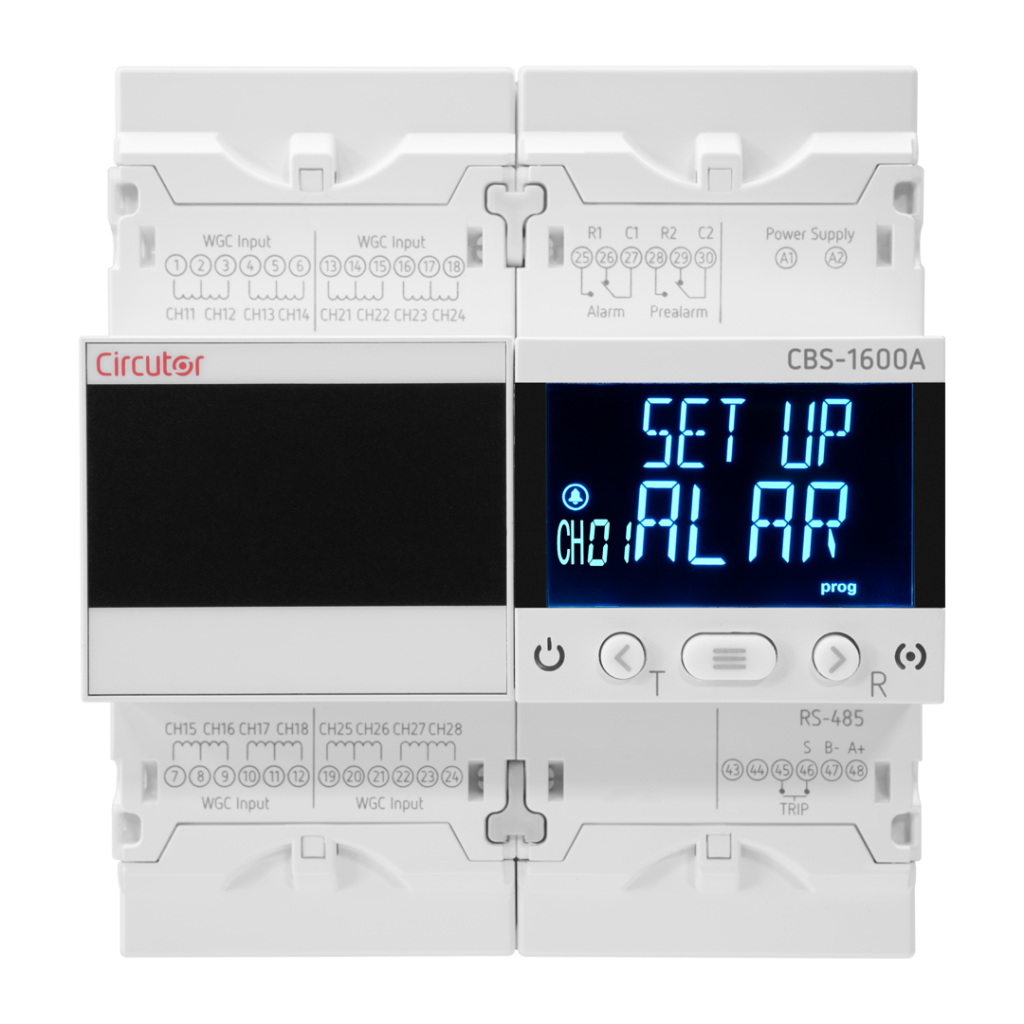
Settings
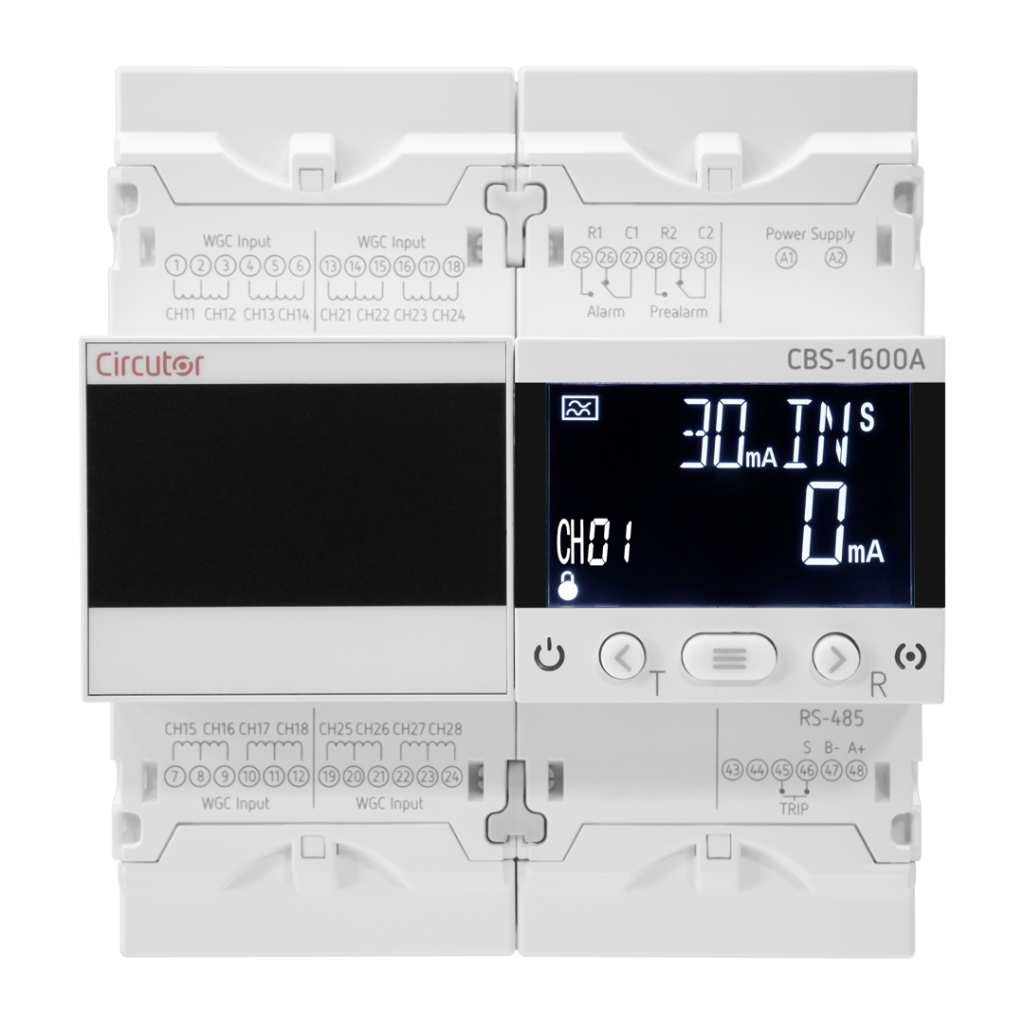
Monitoring

Pre-alarm
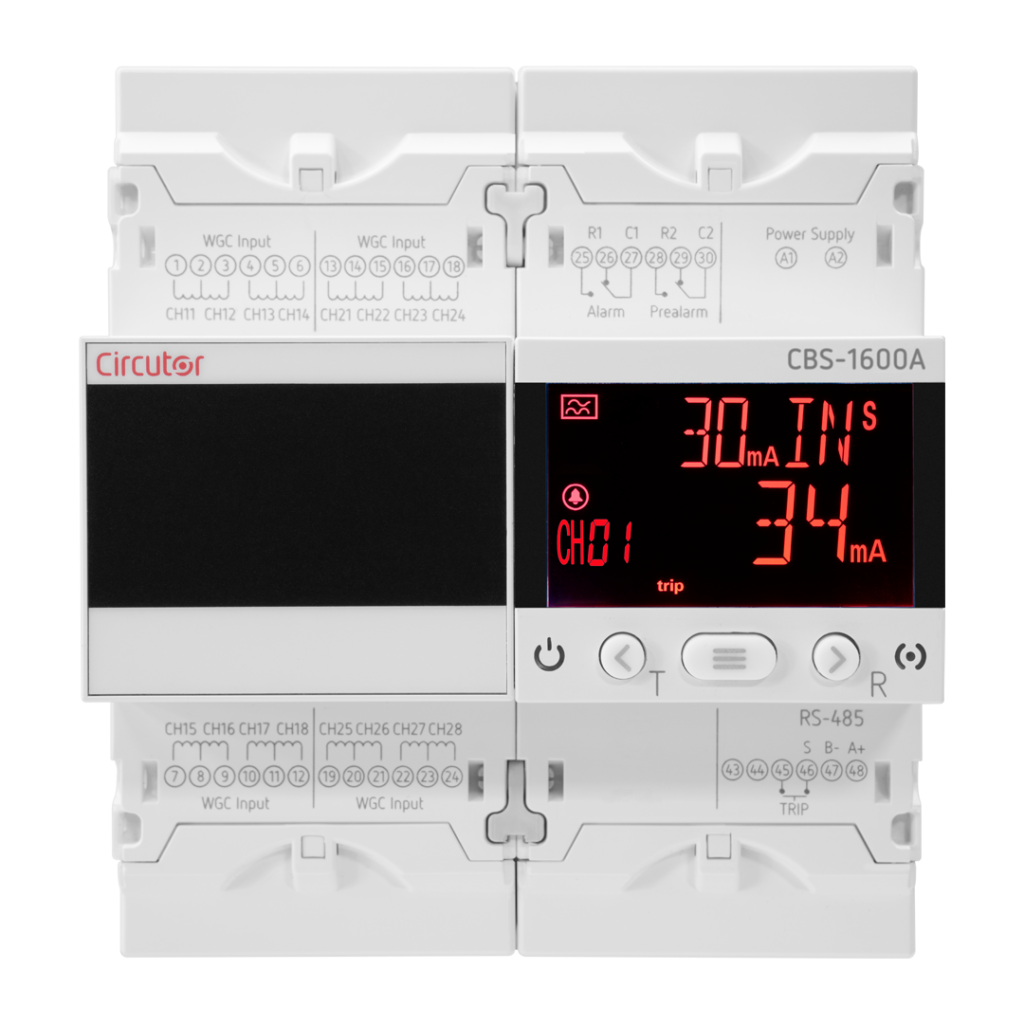
Alarm
Both units feature a pre-alarm via the display and relay, meaning before the alarm level is reached, it allows preventive maintenance to be carried out, and it also offers an event log that can be analysed to aid in troubleshooting.
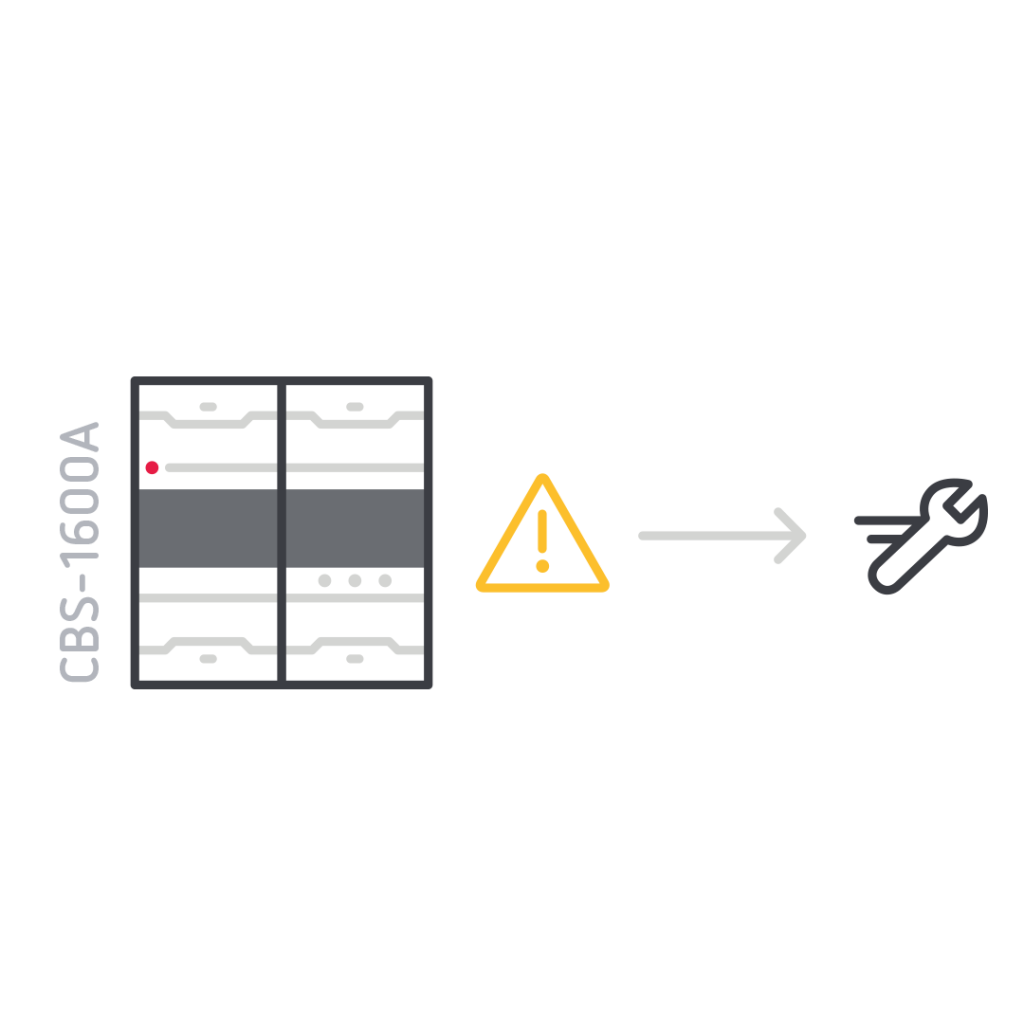
Monitor leakage currents directly through our SCADA monitoring software, PowerStudio, or using any other SCADA system via RS-485 communications (Modbus RTU). These systems can be used to monitor and display alarms and events, as well as to remotely manage the relay outputs for alarms and pre-alarms.
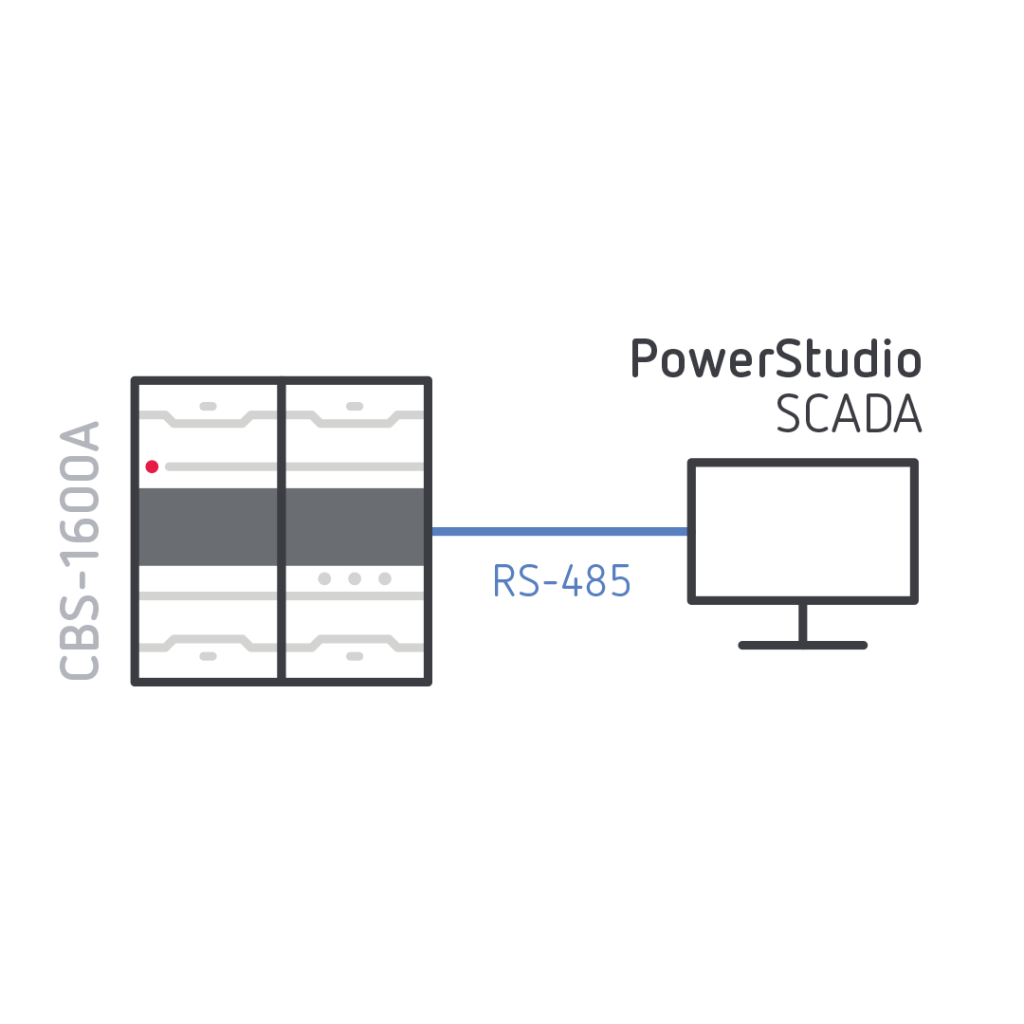
Type-A protection transformers
Wide range of leakage currentsManage accumulated leaks in the main electrical panel, in sub-panels, or analyse those produced directly in the loads. We offer a wide range of WGC protection transformers with cross-sections from 20 mm to 500x200 mm.
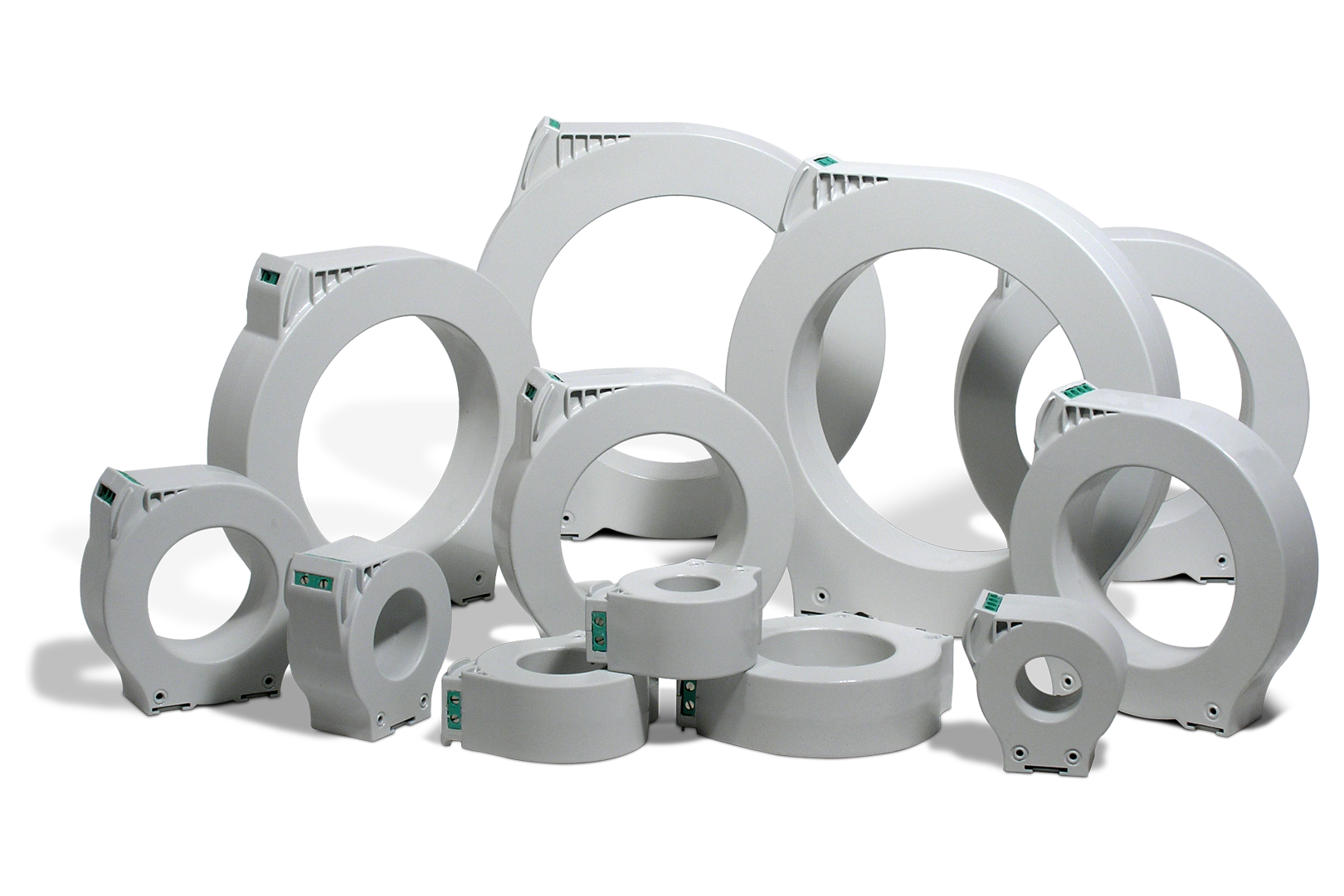
Type-B protection transformers
AC and/or DC leaksThe WGB is a range of electronic, type-B (AC/DC / AC+DC) residual current protection and measurement transformers. The WGB transformer is quickly and conveniently connected with an RJ-45 connector. For lines up to 400A and maximum diameters up to 110mm).

The CBS-1600A unit is a residual current monitoring (RCM) device that can be installed in any setting where service reliability and continuity are required.
It is a solution for installations where the electricity cannot be shut off or for those in which there are faults or production stoppages that affect the safety or economic performance of the installation.
The CBS-2000AB includes 4 type-B channels to monitor those installations where, due to the type of load, the applicable law or a manufacturer's requirement, type-B monitoring
has to be installed.

Electric motors
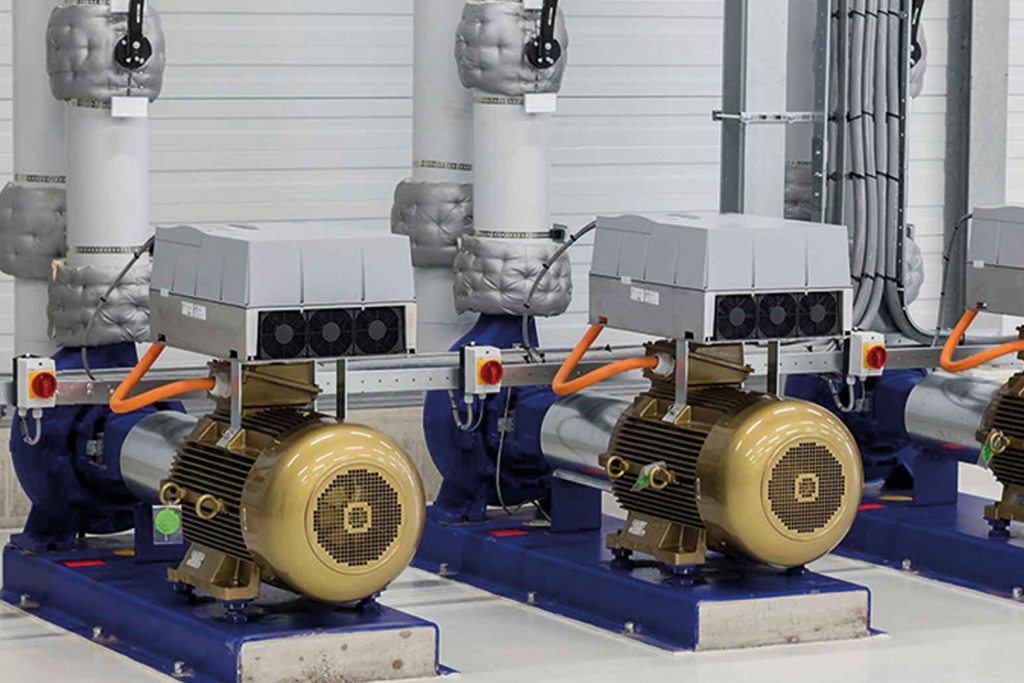
Pumping systems

Operating theatres

Railway

Mining

Gas/Chemical industry


Variable speed drives
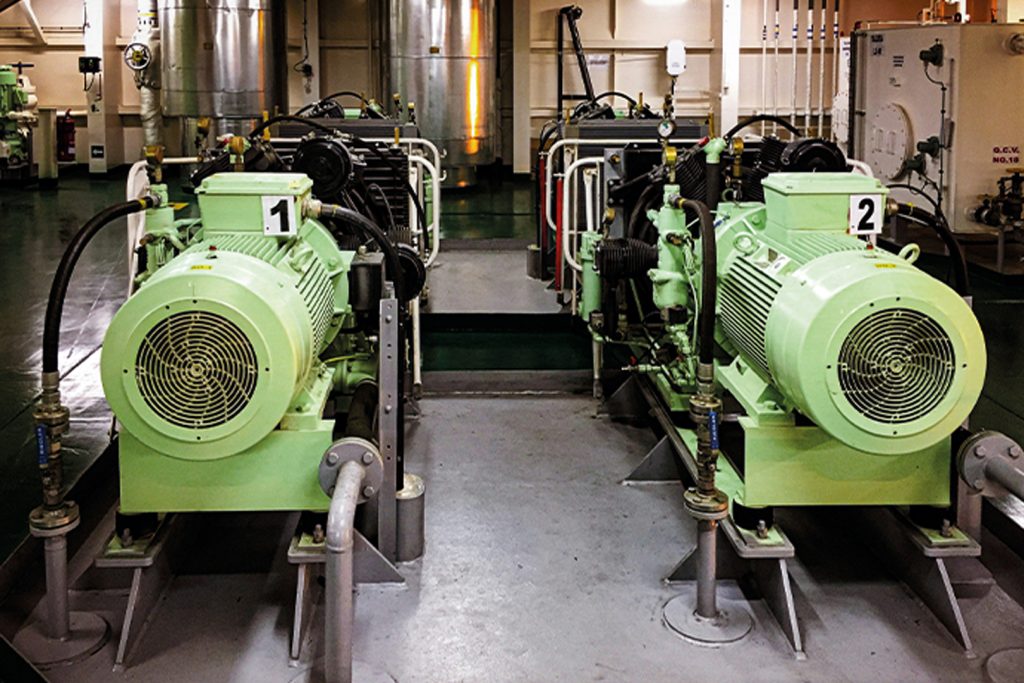
Photovoltaic installations

Electric Vehicle


WRITTEN BY CIRCUTOR